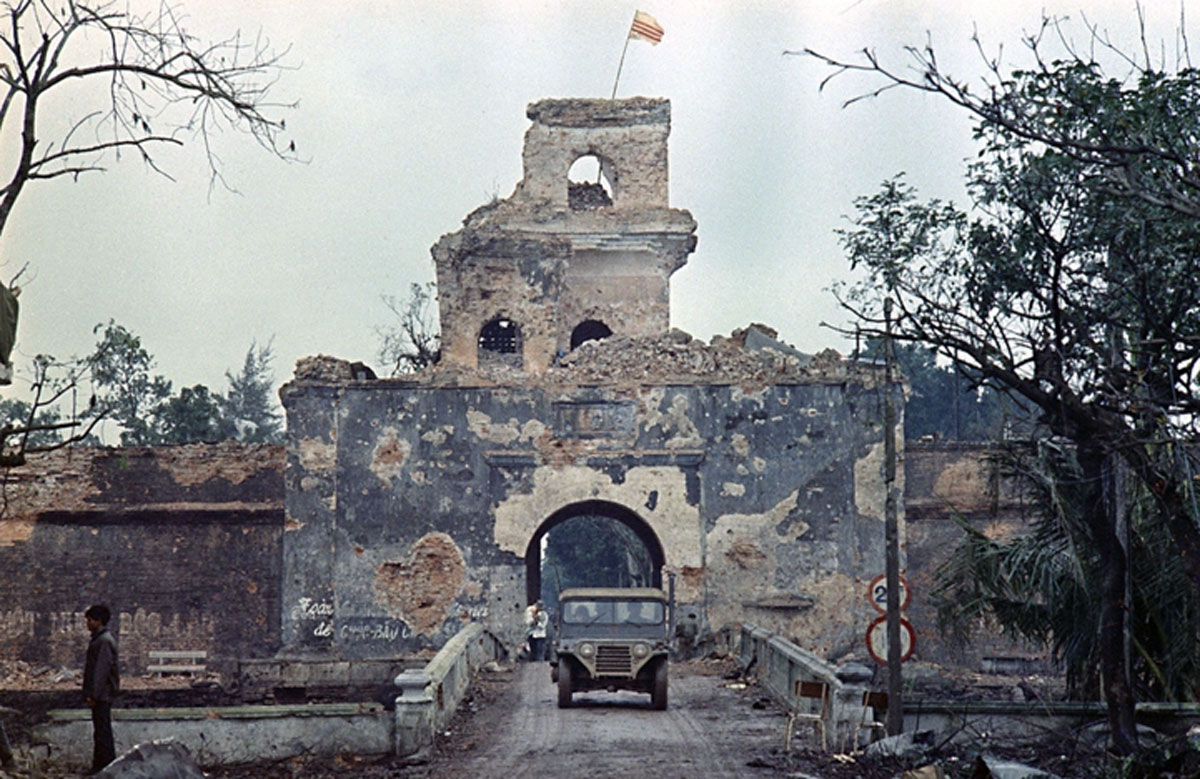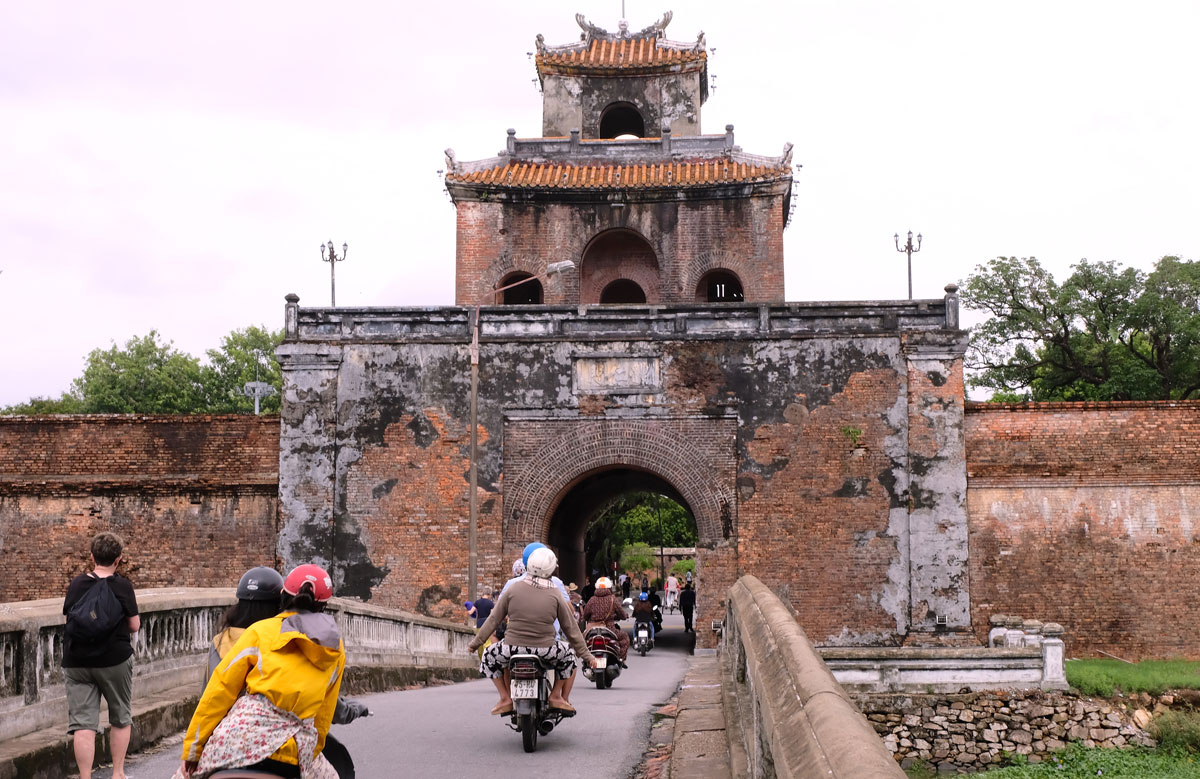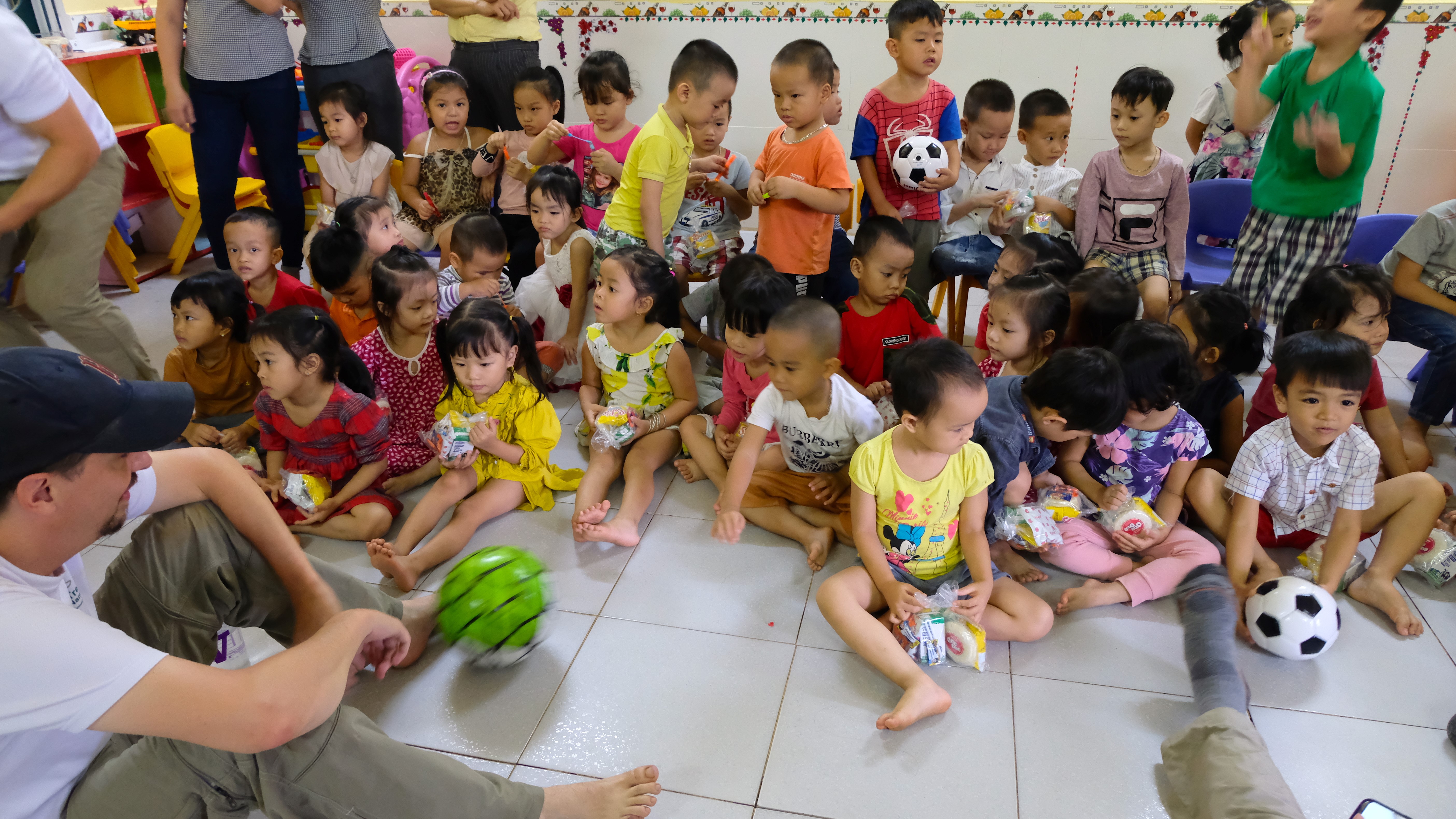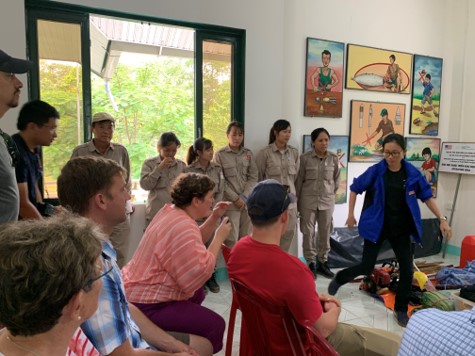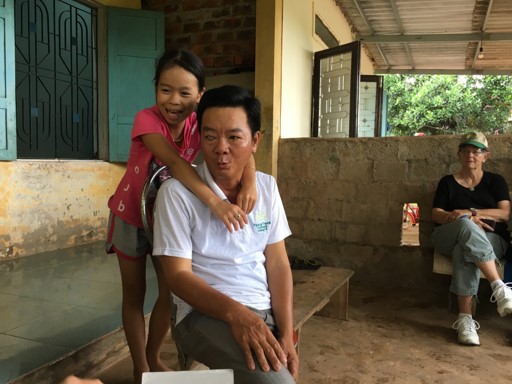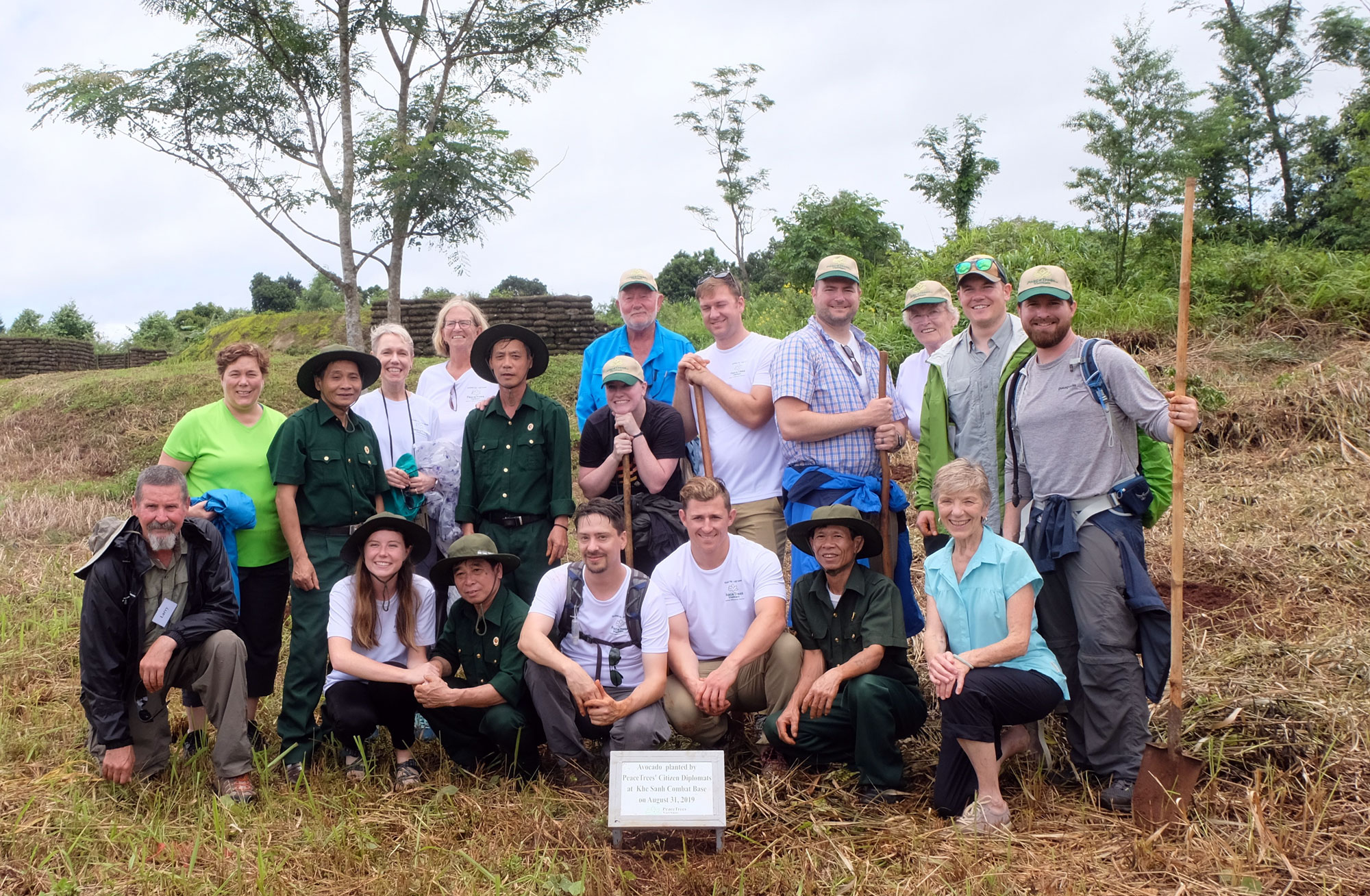
Deep Mud Both Feet Deep Mud Both Feet Deep Mud Both Feet
UW student veterans and Vietnam veterans travel to Vietnam to experience the duality of war and find the path to peace.
By Alyson McGregor | Photos by Stefani Christensen | January 24, 2023
Author’s Note: The Vietnam War was the war of a past generation. Yet, for the United States, its impact still reverberates in the psyche of our families, communities, and the nation. This divisive, devastating war left us questioning our national identity. Almost 30 years after the war’s end, in 2003, I was part of a delegation of American Vietnam vets and civilians who joined with the Seattle nonprofit PeaceTrees Vietnam to take part in the process of reconciliation.
“Deep Mud Both Feet” is a Vietnamese saying that means you’re in a hard place, a deep place, where you cannot move. For a returning veteran who is in deep mud, reckoning with the emotional tensions of the past, the only option is to stand and deal.
On a hot June day in Hanoi, our delegation was escorted into the office of Mr. Vu Xuan Hong, a former People’s Army of Vietnam (North Vietnamese) soldier and a high-ranking official in the Vietnamese government. Chairs were placed in a semi-circle, creating a sense of intimacy. Mr. Hong was surprisingly calm. Smiling and open, he invited us to take a seat. Once we were in place, however, Mr. Hong’s demeanor changed. His eyes and attention focused on our veterans.
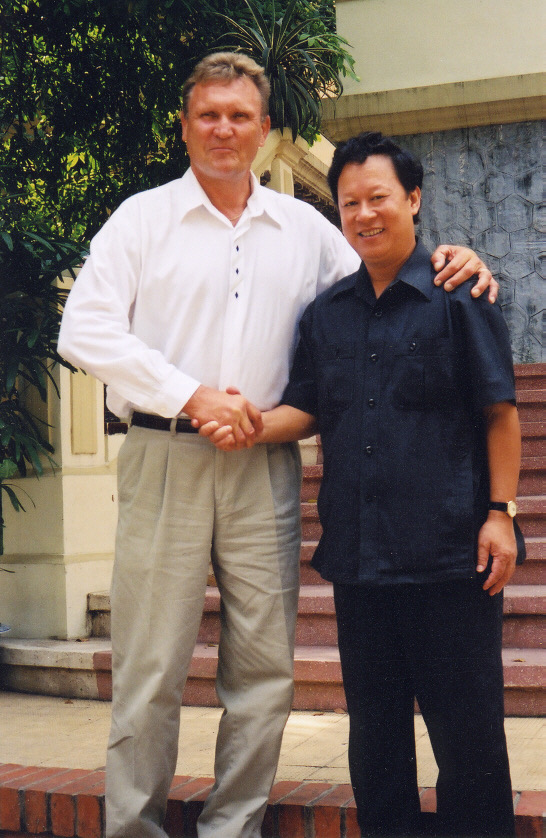
Vu Xuan Hong (right) shakes hands with USMC Vietnam vet Ralph Monty.
The atmosphere in the room became emotionally intense as Mr. Hong gathered himself, leaned toward our veterans, and with a clear, deep voice, delivered his unvarnished truth. “You and I are brothers,” he said. “We both know war. We understand each other. Come, let us close the door to the past so we may open to a new future.”
Just like that, Mr. Hong flipped the script, and I learned what was possible.
That moment changed me. I witnessed what would seem impossible to most: the connection, trust and, eventually, partnership between former enemies. I felt I was given a gift — an invitation to lift the veil of a them-vs.-us polarity and take part in the nuanced movement of peace. I was so moved that I became a supporter and community member of PeaceTrees and focused my time and support on veterans’ issues.
The roots of PeaceTrees Vietnam began in 1969, when Lt. Dan Cheney, a U.S. Army helicopter pilot, was shot down and killed while saving the life of a fellow pilot. Upon hearing the tragic news, his sister, Jerilyn Brusseau of Bainbridge Island, immediately knew that someday American families, like hers, needed to reach out to the Vietnamese people to share their mutual pain and bring healing to both sides. In 1995, after relations were normalized between the U.S. and Vietnam, Jerilyn put her awareness into action when she and her late husband, Danaan Parry, were invited by the Vietnamese government to travel to Quang Tri Province in central Vietnam, location of the former Demilitarized Zone.
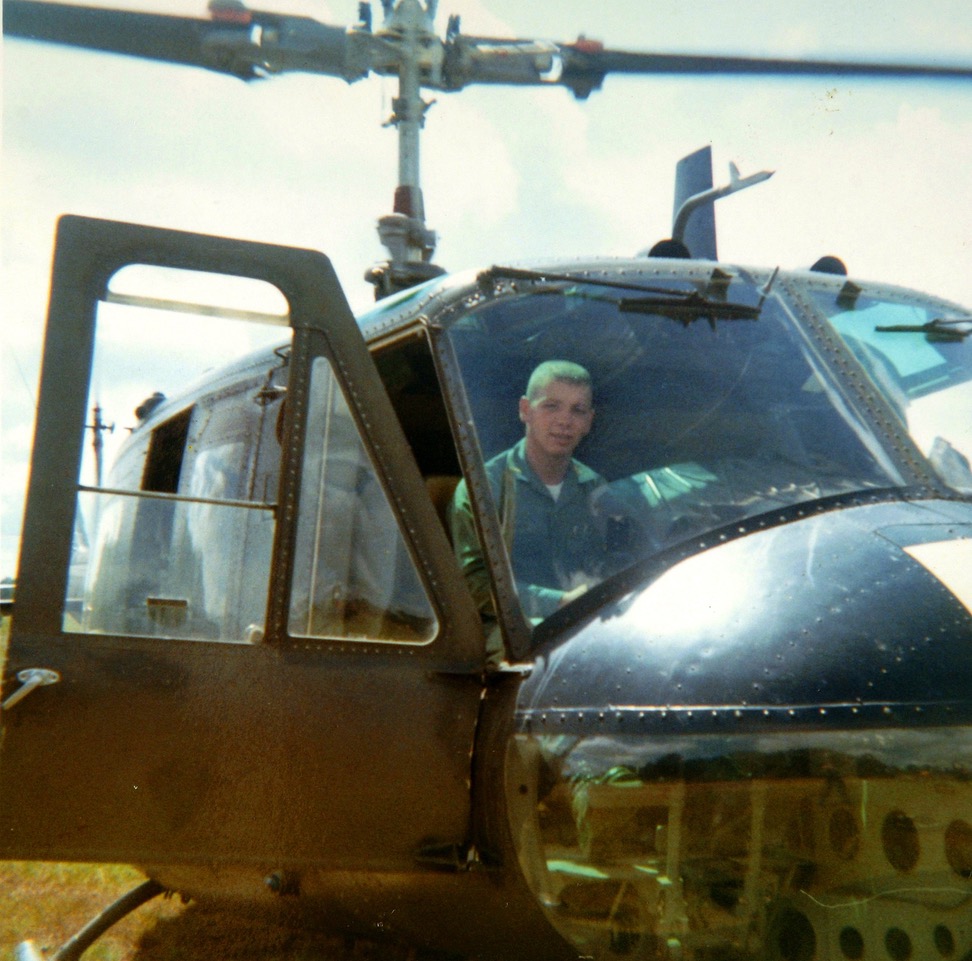
Dan Cheney is photographed in his helicopter at Fort Wolters training center at Mineral Wells Texas in early 1968. Photo credit: Cheney Family
Quang Tri was considered the most-bombed area in the world (6.6 tons of explosives per person). Gazing at the destruction of a field, Jerilyn said, “The land looked like the mountains of the moon.” Not only bare and wasted from the ravages of the war, the land was also riddled with landmines and dangerous live munitions. Jerilyn said, “It felt like the war ended yesterday.” Here, PeaceTrees’ mission was born; sponsoring removal of landmines and unexploded ordinances, replacing and repairing the devastation by planting fresh trees, and providing landmine education and survivor assistance. In addition, PeaceTrees created citizen diplomacy delegations bringing people of both countries together to commune and learn from one another. The heart of PeaceTrees’ mission was “reversing the legacy of war” physically and emotionally. At a memorial honoring her brother, an American Vietnam veteran asked Jerilyn how to get beyond the anger to find the path to peace. She replied, “It means digging underneath the trauma of the war to realize this pain is held by our former enemies as well. We can then honor the losses on both sides. This moment of discovery opens the door to building bridges of trust and friendship.”
In August 2019, I organized a trip comprising seven UW Student Veteran Life members and their director, four American Vietnam veterans, a military veteran videographer, and several PeaceTrees Vietnam staff. It was the second intergenerational veteran trip for PeaceTrees. It was the first intergenerational veterans’ trip where the post-9/11 vets and active service members were University of Washington students.
“I want to set foot in peace where my father served in hell.”
John Downing, '21, U.S. Coast Guard Comdr.
Within three weeks of putting the call out for the trip, 50 UW Student Veteran Life students had applied for the seven available spots. That’s when I understood that the mission of the journey hit a deep vein of interest. The applications gave me an insight and appreciation into the perceptions and desires of the students:
- They were extremely interested in experiencing healing after war and creating the possibility of peace.
- They emphasized the importance of learning and sharing respect for the perspectives held by all sides to understand the impact of the war.
- They wanted to experience Vietnam’s revival and renewal.
- Above all, they wished to travel with American Vietnam veterans who were going back to take a second look. Our Vietnam veterans’ ability to return to the place where they served put the entire group close to the memory of the war and allowed us to experience what could be gained or restored.
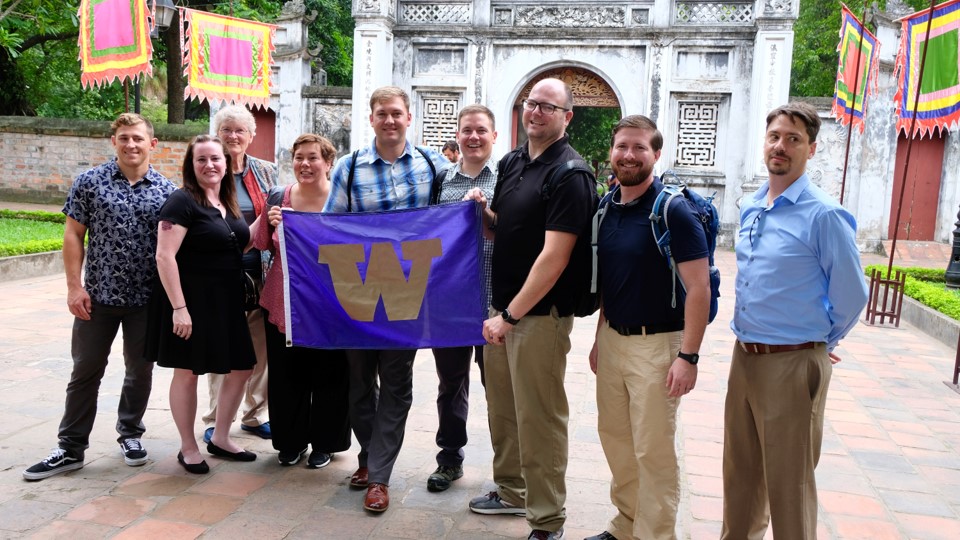
UW veterans pose in front of the Temple of Literature in Hanoi.
For the American Vietnam vets, it was important to let them know this was a “come as you are” trip; all emotions and perspectives welcomed. Mr. Hong and returning American veterans showed me that the willingness to stand in “what is so,” to bring authentic memories and emotions to the fore were the ingredients necessary in opening the door to new perspectives. Don’t choose. Allow. Hold opposing views together, not apart. It is a place of emotional alchemy. My friend and former director of PeaceTrees, Marine Col. Chuck Meadows, who led many veteran reconciliation trips, told me he felt a sudden spark of life when a new perspective arrived. He called it “the click.”
Our itinerary put us in places and conversations that purposely juxtaposed the experience of the war from the two perspectives, Vietnamese and American, as well as placed us in conversations of partnership. At times, it was an emotional roller coaster.
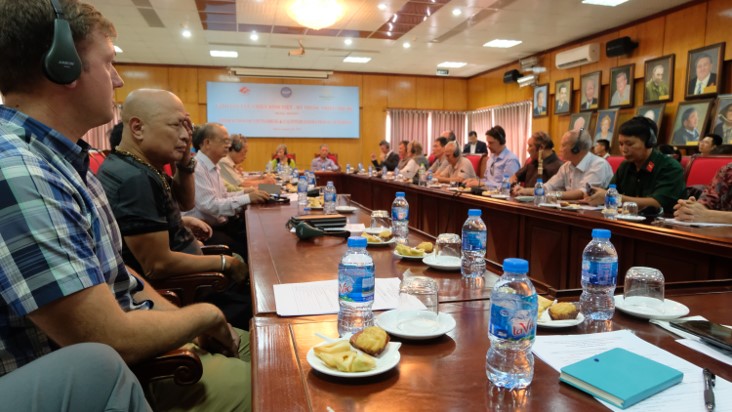
UW/Vietnam vets convene with former PAVN and NLF soldiers at the Friendship House in Hanoi to share perspectives of service.
On our tour was the Imperial City of Hue, one of the major sites for the 1968 Tet Offensive and one of the longest, bloodiest, most devastating battles in the war. Marine Corps veteran Larry Verlinde, a member of our group, fought in that battle and took us on the tour known as “Chuck’s Walk.”
On Jan. 31, 1968, then-Marine Major Chuck Meadows (former PeaceTrees director), commander of Golf 2/5, was given orders to rescue a commanding general of the 1st ARVN Division for the Citadel in Hue. Chuck and his men were never able to fulfill their mission. As soon as they entered the city, “they got shot out of their trucks”…10,000 PAVN and NLF (Viet Cong) were embedded in the city waiting for the 1,000 Marines. One month later, the U.S. prevailed but the cost in terms of lives was high. The shock of the violence and death intensified our national debate over U.S. involvement in the war.
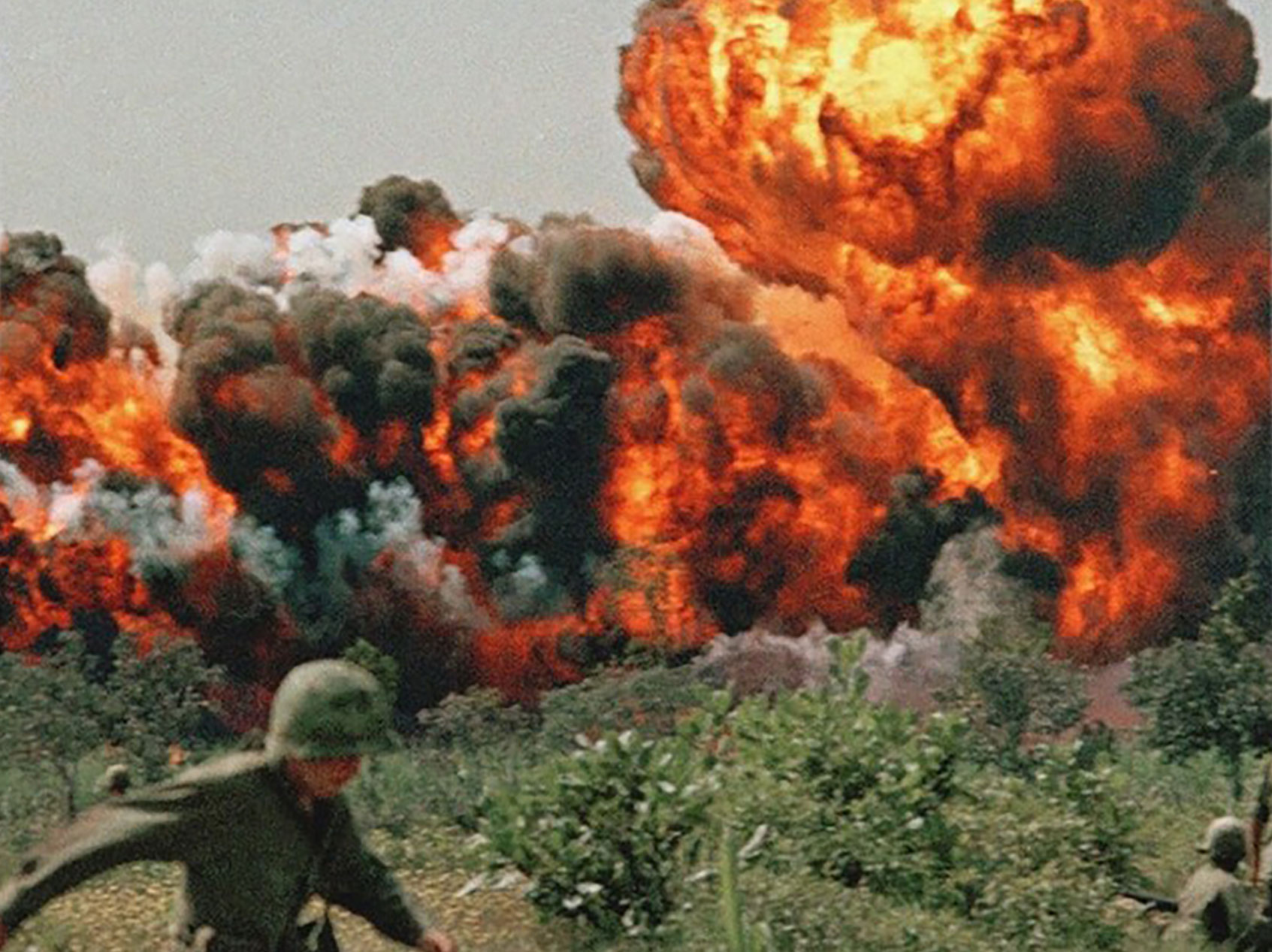
A historic photo demonstrates the extent of the damage in Vietnam.
Larry served under Chuck in Hue. They called each other “Brother.” With Chuck’s diary in hand, lent to him by Chuck’s widow, he took us step by step on “Chuck’s Walk” through the city. Sometimes using Chuck’s words, sometimes his own, Larry recalled the confusion, the small miracles — like finding a city map at a gas station — and the devastation of seeing brothers-in-arms killed. It was a visceral experience. Over the years, Chuck and Larry led many people on the walk. It was a powerful ritual of remembrance. In the end, all tours, including ours, ended up at the Catholic church. Standing with a list in his hand, Larry read the names of the U.S. service members who did not come home. We were silent, standing in sacred space.
Hue represented the war. For our veterans young and old, it brought up the raw emotions felt in combat, especially reverence, sadness, and anger over deep loss. Holding these tense emotions while standing on the former enemy’s land in peace and connection created the rub that Chuck articulated. As retired Army Nurse Col. Grethe Cammermeyer, ’76, ’91, expressed, the moment in Hue pressed her to ask “What were we there for in war? What were we here for in peace?” Big, polarizing questions, like these, put cracks in long-held perspectives. They create internal, deep spaces where new perspectives grow. Hue was where the past and present were held together, forcing a bone-deep understanding that the Vietnamese held the same deep pain. This was Jerilyn’s awareness and what she articulated to the Vietnam veteran. For Grethe and our Vietnam veterans, the remaining question, one that was actually with us from the start was, “Will they (the Vietnamese) understand and accept us?”
- A historic photo depicts the damage to the the citadel.
- The group visits the Imperial City of Hue in Thua Thien Hue Province.
The group took in the fullness of everything the tour had to give; everyone came away with multiple personal takeaways. For some Vietnam veterans, seeing the people of Vietnam rebuild their once-shattered country into thriving, healthy communities eased some of the pain they experienced while serving.
It was, however, meeting Tạ Thị Hồng Phấn, a former nurse among revolutionary forces, and Grethe’s counterpart in the war, that answered and anchored the larger question of acceptance.
“Several of us had the extraordinary experience of meeting a North Vietnamese nurse who had first served in the North Vietnamese Army and later became a Vietnamese Army nurse. She and her husband (a surgeon) provided care for the wounded, including Americans, in the tunnels where they lived and worked. The tunnels had been built to withstand American bombardment, so they were up to 100 feet underground. The nurse told of living, having a family and working in these tunnels for years. Despite the hardships, she and her family survived, though her husband ultimately died from complications of Agent Orange exposure. She bore no grudge and was warm, gracious and welcoming during our time together. As we left, she commented that we should do this more often, helping former enemies become friends.”
The mission of this trip was more about an ongoing inner process than an outward, targeted goal. For the returning vets, I hoped fresh memories would bring a new perspective that would bring new life to a place where they gave and lost so much. For the younger vets and service members, I hoped to instill a vision and possibility for their future.
- In Quang Tri Province, the group tours kindergartens and libraries financed by American Vietnam vets and their families to honor both the Vietnamese people and their own loved ones who did not come home.
- The tour group meets the landmine and explosive removal team.
- A landmine survivor and his family represent the “regenerative ability of the human spirit.”
“While always hoping ultimately for peace, we live in a world where war exists and is sometimes used too soon in conflict to solve problems. This trip solidified my belief peace and friendship after war can occur. Perhaps in 50 years, I will be sitting across a table from Afghanistan military veterans who served during this war and telling tales of our experiences. Perhaps in 50 years, I will be planting trees (or cacti) with them to represent our resolve for future peace.”
—Dr. Samantha Powers
Director, UW Office of Student Veteran Life
Captain, U.S. Air Force Special Operations
Aircraft Maintenance Officer
“As a Marine, my first commandment was ‘Always take care of your troops.’ Now, it’s, ‘Take care of the people,’ which is simply a redirecting of compassion.”
—The late U.S. Marine Col. Chuck Meadows
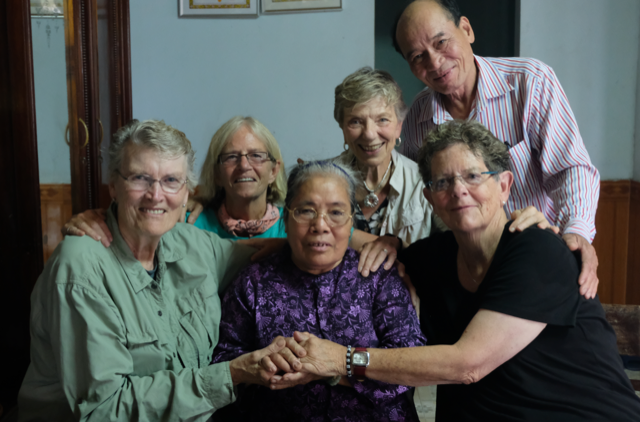
US and Vietnam nurses gather. Front row: Grethe Cammermeyer, Ta Thi Hong Pham, Bev Babson. Back row: Stefani Christensen, Jerilyn Brusseau, Le Dang Pham (Vietnamese veteran who helped find Ta Thi Hong Pham).
The trip would not have been successful without the gifts and help of many people. I wish to give a special shout-out to the PeaceTrees team (Vietnam and U.S.), who worked tirelessly to create the necessary connections, ushered us to our all our meetings, and made sure we were well nourished, body and soul.
PeaceTrees Vietnam, Dong Ha, Vietnam staff:
- Phạm Hoàng Hà
- Phạm Minh Phương
- Lê Viết Sửu
- Đoàn Thị Bích Thảo
- Vũ Thị Vân Anh
- Hoàng Đăng Tùng
PeaceTrees Vietnam, Seattle, U.S. staff:
- Jerilyn Brusseau
- Carlie Stowe
Visit the PeaceTrees website or send an email to learn more.
Trip Members: Grethe Cammermeyer, Bev Babson, Steve Hopkins, Larry Verlinde, Stef Christensen, Sam Powers, Will Pietsch, Ignacio Cabezudo, John Downing, Patience Veloza, Kris Kalbfleisch, Nathan Brock, Victor Rizzardi, Carlie Stowe, Jerilyn Brusseau, and Alyson McGregor.
In addition, I wish to acknowledge and thank:
Christoph Giebel, Associate Professor, UW Department of History with a joint appointment in the Jackson School of International Studies. His research and teaching interests concern 20th century Vietnam; comparative colonialism and (French and U.S.) imperialism in (Southeast) Asia; history, historiography, and memory; and the spatial representations of the wars in Vietnam. Professor Giebel gave us a powerful history of the U.S. war in Vietnam that dismantled our historically inaccurate perceptions and opened us to a much more complex picture.
Mike R. Fey, D.D.S., UW School of Dentistry (retired), U.S. Army Vietnam veteran. Mike helped the Vietnamese set up their first dental school in Hanoi. He presented our group with a slide show called “A Photo Journey from War to Partnership,” detailing his evolution from soldier to working alongside the Vietnamese. Mike was my “proof of concept” for this trip. Thank you, Mike!
* * * *
Alyson McGregor, ’83, received her B.A. from the Henry M. Jackson School of International Studies. She grew up in a rural, eastern Washington town and is grateful to her family and special farming community for being the first to foster her desire to learn, grow, and evolve. Alyson participated in six PeaceTrees citizen diplomacy trips. She is an artist, philanthropist and teacher of creativity. She established the first-ever professorship at UW Bothell, the Alyson McGregor Distinguished Professorship of Excellence and Transformative Research.
